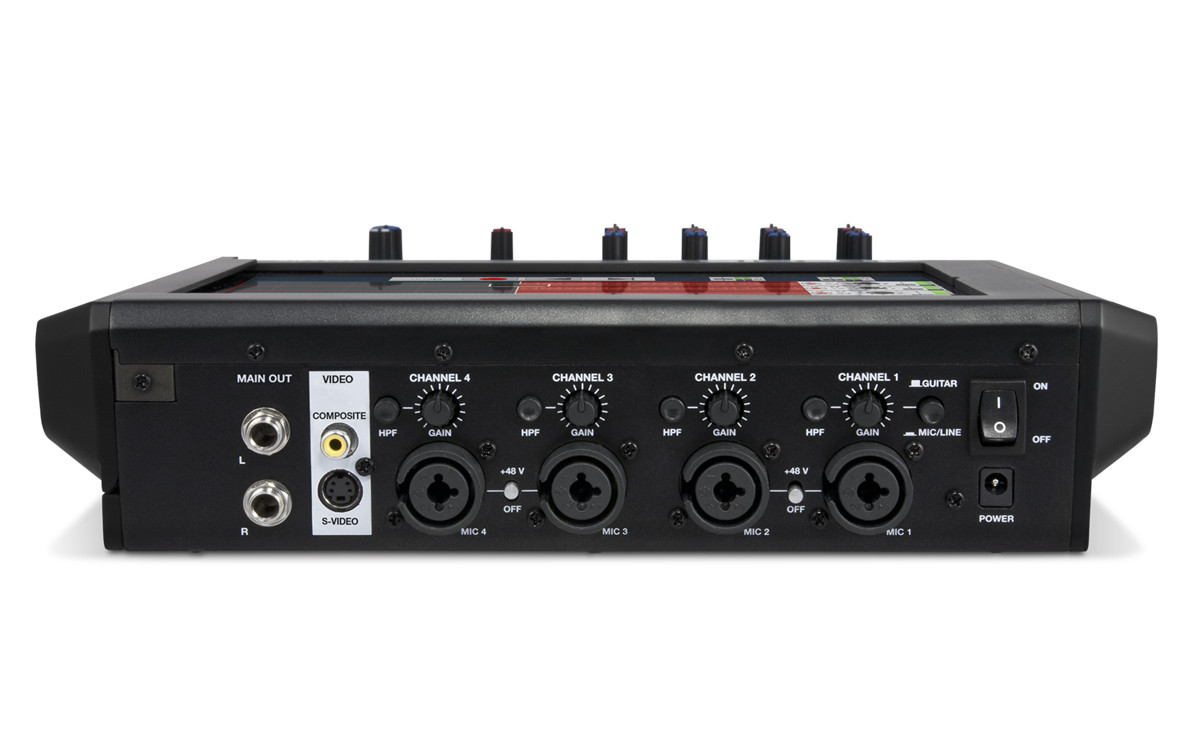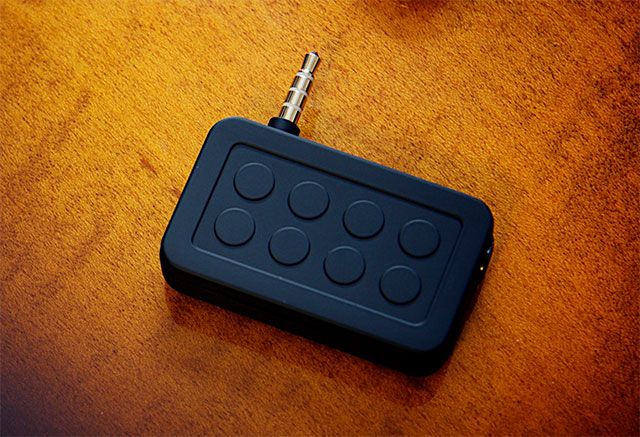Garageband Midi Output Ipad
- Garageband will recognize exactly what tool you’re using the moment you connect it. It works the same way that the Musical Typing option does, but with a much bigger range, which makes writing music a lot easier, especially if you like to use the piano. MIDI stands for Musical Instrument Digital Interface.
- To connect a controller keyboard with an iOS interface, first connect the interface to your iOS device’s dock port. Next, plug the keyboard’s MIDI out to the MIDI in on the interface using either a standard MIDI cable or a cable that comes with the unit, depending on the interface you have.
Garageband Midi Ipad
GarageBand User Guide for iPad
You can import audio and MIDI files from your computer and use them in your GarageBand song. You can add:
May 10, 2016 Hey guys, just started recording in Garage Band - the new version. I'm having a problem, I currently have 7 tacks open. One drum track, 6 guitar and one bass. When I'm playing them back, or pressing record, they are starting to crackle upon play back - like the sound is getting scrambled!
Audio files to an existing Audio Recorder or Amp track
MIDI files to an existing Keyboard or Drums track
Audio or MIDI files to new tracks
Audio or MIDI files to your song from iCloud Drive or your iPad using the Files app
When you import an audio file, it’s converted to a 44.1 kHz sample rate, 16-bit depth format if the original format is different. Imported audio files don’t follow tempo changes you make in GarageBand.
When you import a multitrack MIDI file, GarageBand creates a new Keyboard track for each track in the MIDI file. The total number of resulting tracks cannot exceed 32 tracks. You cannot add multitrack MIDI files to cells in Live Loops.
Import audio and MIDI files from your computer
On your computer, add the audio or MIDI files you want to import to the GarageBand File Sharing area in the Finder.
In GarageBand on your iPad, set the current song section to Automatic to import the entire audio or MIDI file; otherwise, only the portion of the file that fits the current song section is imported.
After importing the audio or MIDI file, you can make the song section longer, then resize the region so more of it plays.
Tap the Tracks View button to open Tracks view, then tap the Loop Browser button in the control bar.
A message appears asking if you want to move the audio or MIDI files to the GarageBand File Transfer folder.
Tap Move Files.
The files are moved to the GarageBand File Transfer folder.
How to remove moog library on omnisphere 2. The Bob Moog Tribute Library is available as a 2.4GB downloadable product in the Techshop for $100 and requires Omnisphere v2.4 or higher 100% of the proceeds of this library go to the Bob Moog. May 23, 2012 50+ videos Play all Mix - PROJECT PRESET - Omnisphere Bob Moog Tribute Library 1.1.0 Update YouTube Cthulhu VST/AU Demonstration - Duration: 16:28. XferRecords 357,323 views. Mar 21, 2011 Here is a quick look at some patches from the newly released Bob Moog Tribute Library for Spectrasonics Omnisphere which I had the extreme privilege to contribute to! Oct 04, 2016 Hello folks, I installed the free 'Lunarpole Epic Enigma' library for Omnisphere 2 using the installation function within Omnisphere. Now I wanted to remove this library from Omnisphere but I cannot find a hint in the manual or a button for this purpose. Perhaps someone knows what to do. Mar 23, 2011 Rate! Leave a Comment! Information on the new 2.4GB Bob Moog Tribute Sound Library for Spectrasonics Omnisphere. I was asked to make patches for this library.
To preview an audio file, tap it in the list. You can control the preview volume with the slider at the bottom of the list.
Drag an audio or MIDI file from the list to Tracks view. Align the left edge of the file with the bar or beat (on the ruler) where you want it to start playing.
A new region created from the audio or MIDI file is trimmed to the end of the current song section, unless the current song section is set to Automatic. You can make the song section longer or slow down the tempo, then resize the region so that more of it plays.
Import audio and MIDI files with the Files app

Set the current song section to Automatic to import the entire audio or MIDI file; otherwise, only the portion of the file that fits the current song section is imported.
After importing the file, you can make the song section longer, then resize the region so that more of it plays.
Tap the Tracks View button to open Tracks view, tap the Loop Browser button in the control bar, then tap Files.
Tap “Browse items from the Files app,” then locate and tap an audio or MIDI file to import it.
To preview an audio file, tap it in the list. You can control the preview volume with the slider at the bottom of the list.
Drag an audio or MIDI file from the list to Tracks view. Align the left edge of the file with the bar or beat (on the ruler) where you want it to start playing.
A new region created from the audio or MIDI file is trimmed to the end of the current song section, unless the current song section is set to Automatic. You can make the song section longer or slow down the tempo, then resize the region so that more of it plays.

Import audio and MIDI files using Slide Over
Set the current song section to Automatic to import the entire audio or MIDI file; otherwise, only the portion of the file that fits the current song section is imported.
After importing the file, you can make the song section longer, then resize the region so that more of it plays.
Swipe up twice from the bottom edge of the screen.
The Dock appears.
In the Dock, touch and hold the Files app, drag it towards the upper-right corner of the screen, then let go.
A Slide Over window opens.
Locate the audio or MIDI file you want to import. If the file is in iCloud Drive, tap the Download button to download it before importing.
Touch and hold the file, then drag it from the Slide Over window to Tracks view. Align the left edge of the file with the bar or beat (on the ruler) where you want it to start playing.
A new region created from the audio or MIDI file is trimmed to the end of the current song section, unless the current song section is set to Automatic. You can make the song section longer or slow down the tempo, then resize the region so that more of it plays.
In iLife ’11, you don’t have to use a USB keyboard for MIDI input to GarageBand ’11 — any MIDI instrument or device can be connected by using an audio interface, which is a box that has many ports for connecting various types of audio equipment.
To use an audio interface with one or more MIDI devices, you must first install the software that comes with the interface. (Follow the manufacturer’s instructions.) You can then use Audio MIDI Setup (in Applications/Utilities) to select audio channel input and output devices for your Mac and control volume levels and other characteristics. Follow these steps:
Jul 04, 2015 Is there anyway to just completely stop the download and never have the computer ask me to do it again. I have already tried to force quit Garageband and have uninstalled it and reinstalled it and it still tries to download. I have a brand new MacBook Pro running the latest version of Yosemite and the latest version of Garageband. Thanks, Theo. Download GarageBand for Windows 10 PC & Laptop for free. Actually garageband is an iOS app which cant be directly used in any Windows PC. How to stop garageband download.
Midi Output Cable
Connect the audio interface to your Mac and connect the MIDI devices to the interface.
Double-click the Audio MIDI Setup application (in Applications/Utilities) to open the Audio MIDI Setup window, and then click the MIDI Devices tab.
The MIDI devices connected to your computer appear in the Audio MIDI Setup window. If your MIDI devices don’t appear, click the Rescan MIDI button on the toolbar along the top of the Audio MIDI Setup window.
Choose New Configuration from the Configuration pop-up menu; in the dialog that appears, name the new configuration and then click OK.
Double-click the icon for your MIDI interface device and name the device or change its settings.
The Properties dialog for your device appears, enabling you to name the device. You can change settings for the MIDI properties and ports for the device.
Click the OK button to finish making changes.
To add another MIDI device to your new configuration, click Add Device.
The Add Device button is on the toolbar along the top of the Audio MIDI Setup window. For each MIDI device connected to your MIDI interface device that you want to include in the configuration, repeat Steps 4 through 6.
When you’re finished, choose Audio MIDI Setup→Quit Audio MIDI Setup.
Your MIDI device should now be working with GarageBand. To check, choose GarageBand→Preferences and click the Audio/MIDI button to see the Audio/MIDI pane.